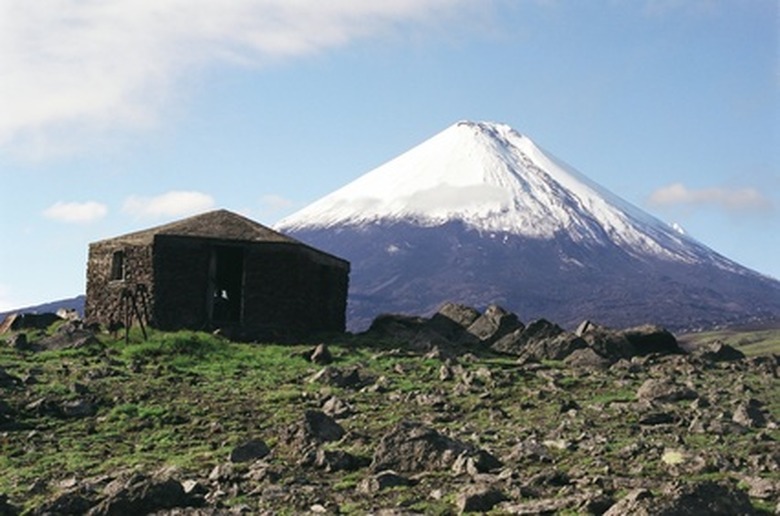How To Make A Model Of A Composite Volcano
Composite volcanoes, also known as stratovolcanoes, combine the defining characteristics of both cinder cone and shield volcanoes. Composite volcano eruptions produce both ash, like cinder cone volcanoes, and lava, like shield volcanoes. Due to these dual eruptions, composite volcanoes have a pointy cone shape like cinder cone volcanoes but have alternating layers of hardened lava and cinder, or ash. To make a model of a composite volcano you must produce these alternating layers of materials.
Step 1
Cut a section of cardboard to use as the base for your volcano model: Use a ruler and pencil to draw a 1-foot square onto a large piece of thick cardboard. Cut the square out using a utility knife.
Step 2
Prepare the model lava layers by melting unscented white candles on medium heat in an old metal cook pot you do not care to ruin with wax remnants. Shave flakes off a black crayon using the utility knife to scrape the flakes into the pot with the melted candle wax. Continue stirring and adding flakes until the melted wax in the cook pot has a dark gray color.
Step 3
Have an assistant hold a test tube upright in the middle of the cardboard piece. Place the test tube with the hole facing upward and prepare to start building up the layers of the composite volcano model.
Step 4
Use an oven mitten to handle the hot cook pot and pour a small layer of wax around the bottom of the test tube and out onto the cardboard. Do not cover the entire cardboard square, but make a small dome around the test tube.
Step 5
Set the cook pot back on the hot stove so the wax does not cool completely while you apply a layer of the black crafting sand. Apply this sand layer over the wax layer, extending the sand out a bit more in diameter and piling the sand up against the sides of the test tube.
Step 6
Pour another layer of the gray wax onto the sand layer. Continue to alternate sand and wax layers until you reach the top of the test tube. You should have a pointy-shaped volcano model from doming the layers around the test tube. Build the layers up past the test tube opening but do not allow any wax or sand to fall into the test tube.
Things Needed
- Cardboard
- Ruler
- Pencil
- Utility knife
- Unscented white candles
- Old metal cook pot
- Black crayons
- Test tube
- Metal spoon
- Oven mitten
- Black craft sand
TL;DR (Too Long; Didn't Read)
You may use the empty test tube to combine vinegar and baking soda to make the volcano erupt. You may also carefully pull the test tube out of the model and cut the model in half to provide a better view of the alternating layers of the model.
Cite This Article
MLA
Porter, Penny. "How To Make A Model Of A Composite Volcano" sciencing.com, https://www.sciencing.com/make-model-composite-volcano-6744574/. 22 November 2019.
APA
Porter, Penny. (2019, November 22). How To Make A Model Of A Composite Volcano. sciencing.com. Retrieved from https://www.sciencing.com/make-model-composite-volcano-6744574/
Chicago
Porter, Penny. How To Make A Model Of A Composite Volcano last modified March 24, 2022. https://www.sciencing.com/make-model-composite-volcano-6744574/
